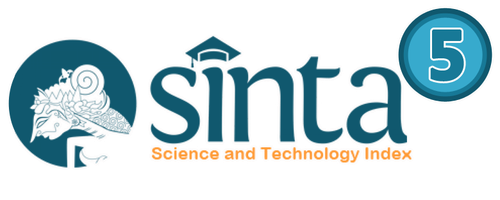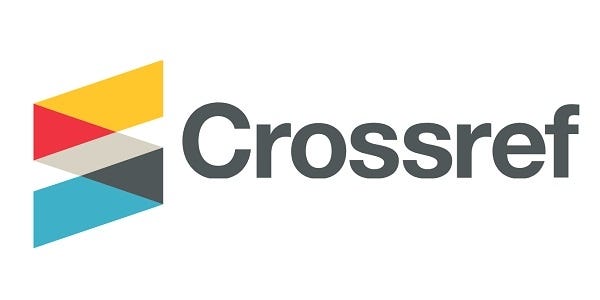TO WHAT EXTENT DOES YOUTUBE CONTENTS-BASED LANGUAGE LEARNING PROMOTE AN ENGLISH PROFICIENCY?
DOI:
https://doi.org/10.47080/jeltl.v3i2.994Keywords:
YouTube, EFL Learning-Instruction, English ProficiencyAbstract
The flourishing development of technological software could have been as the necessary reality. The ever-changing technological learning media emergence as the description of digital disruption in educational contexts. Teaching English as a Foreign Language is regarded as a challenging activity, since language teaching is strongly expected to have a quality teaching strategies to improve English proficiency. YouTube is principally designed to increase both aspects of language competency, and personal aspects of EFL learners, such as learning motivation, critical thinking, and learning autonomy. YouTube represents the presence of the sifting educational paradigm from the traditional teaching or teacher centeredness to authentic or meaningful language learning, in which these would have been centralized on EFL learners’ domain (student-centered learning). The constructive changing of language approaches are indicated by the use of web 2.0 software presenting varying types of webs-based language learning software, YouTube. It is properly regarded to have contributed to produce the authentic and meaningful learning sources. And also, this learning model could have been made as the supplementary materials, in purpose of incorporating the traditional face-to face class activities into language learning supported by e-media. All in all, Those YouTube-based language learning’s advantages could contribute to build up independence of language learning. Therefore, the effectiveness of YouTube-based language learning potentially develop EFL learners’ class participation; social engagement, critical thinking, better comprehension of the subject-matters, and learning autonomy
Downloads
References
Almurashi, W.A. (2016). The Effective Use of Youtube Videos for Teaching English Language in Classrooms as Supplementary Material at Taibah University in Alula. International Journal of English Language and Linguistics Research. 4 (3): 32-47
Bajrami, L. and Ismaili, M. (2016). The Role of Video Materials in EFL Classrooms. Procedia-Social and Behavioral Sciences. 232, 502-506
Barreto, A.M.R. (2018). Motivating English Language Use by Using the Benefits of Technology. Gist Education and Learning Research Journal. (16), 117-140
Brooks, A. (2004). Posfeminisme & Cultural Studies: Sebuah Pengantar Paling Komprehensif (S. Kunto Adi Wibowo, penerjemah dan Idi Subandy Ibrahim, editor). Yogyakarta: Jalasutra. (Karya asli diterbitkan pada 1997).
Bastos, A. and Ramos, A. (2009) Youtube for Learning English as a Foreign Language: Critical Thinking, Communicative Skills. Proceedings of EDULEARN09 Conference, Barcelona, Spain.
Budianto, L. (2014). Promoting Students’ Autonomous Learning through ICT Based Learning in ICP: A Case Study. LiNGUA. 9 (2), 125-134
Brunner, I. (2013). Using Language Learning Resources on Youtube. International Conference “ICT for Language Learning” 6th edition. 1-5
Brook, J. (2011). The Affordance of YouTube for Language Learning and teaching. Hawaii Pacific University TESOL Working Paper Series 9. 1 (2), 37-56
Chen, Y. (2013). The Possibility of Applying YouTube to Motivate Learning Autonomy. Journal of International Education Research. 9 (3), 207-216
Dodd, R et al., (2015). The Use of Supplementary Materials in English Foreign Language Classes in Ecuadorian Secondary Schools. English Language Teaching. 8 (9), 187-195
Duffy, P. (2008). Engaging the YouTube Google-Eyed Generation; Strategies for Using Web 2.0 in Teaching and Learning. The Electronic Journal of e-Learning. 6 (2), 119-130
Ismaili, M. (2013). The Effectiveness of Using Movies in the EFL Classroom- A Case Study Conducted at South East European University. Academic Journal of Interdisciplinary Studies. 2 (4), 121-132
Jalaluddin, M. (2016). Using YouTube to Enhance Speaking Skills in ESL Classroom. English for Specific Purposes World.17 (50), 1-4
June et al., (2014). Assessing the Use of YouTube Videos and Interactive Activities as a Critical Thinking Simulation for Tertiary Students: An Action Research. International Education Studies. 7 (8), 56-67
Kawamura, M. and Wu, P.H.N. (2015). Developing Critical Thinking Skills through Content Base Learning Using Media. International Conference on Communication, Health, Beauty, and Innovation Education (CHBIE).
Kelsen, B. (2009). Teaching EFL to the iGeneration: A Survey of Using YouTube as Supplementary Material with College EFL Students in Taiwan. CALL-EJ: Conference Presentation on 2nd Conference on College English, National Chengchi University, Taipei, Taiwan. 1-20
Konoplianyk, L. (2018). Use of Authentic Video Materials in Teaching ESP for Future Civil Engineers. Candidate of Pedagogical Sciences. 464-480
Mohammadi, N. et al., (2011). Effects of e-Learning on Language Learning. Procedia Computer Science. 3, 464-468
Noordin et al.,(2014). Integrating Communicative Approach and Technology in ESL Classroom. Journal of Business and Social Development. 2 (1), 30-36
Panagiotidis et al., (2018). Technology as a Motivational factor in Foreign Language Learning. European Journal of Education. 1 (3), 43-52
Soliman, N.A. (2019). Using E-Learning to Develop EFL Students’ Language Skills and Activate Their Independent Learning. Creative Education. 5, 752-757
Syarif, S.B.M. and Shah, P.M. (2019). Pupils Perception of Using YouTube and Autonomous Learning. Creative Education. 10, 3509-3520. https:doi-org/10.4236/ce.2019.10/3270
Watkins, J. and Wilkins, M. (2011). Using Youtube in the EFL Classroom. Language Education in Asia. 2 (1), 113-119






